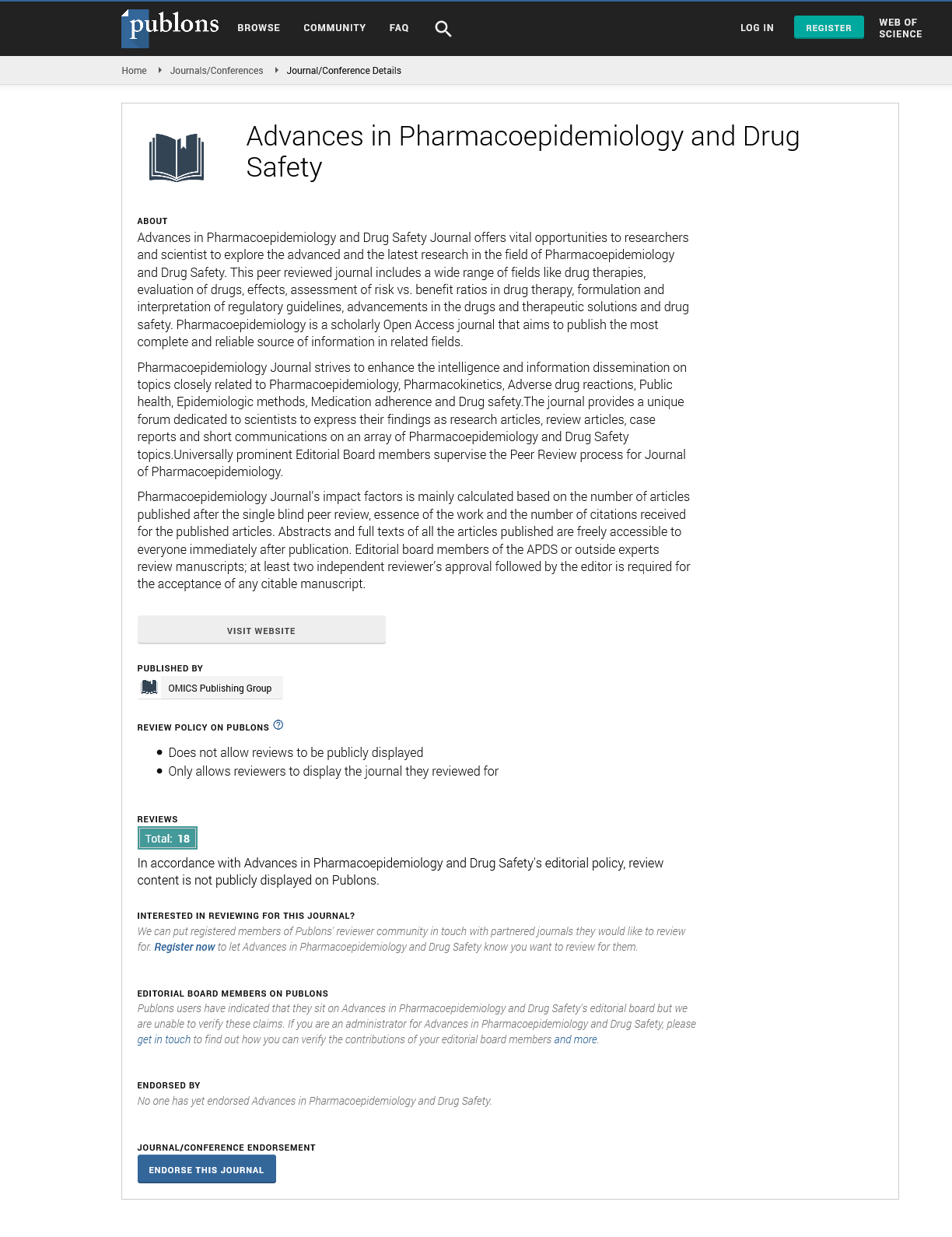Indexed In
- Open J Gate
- Genamics JournalSeek
- Academic Keys
- JournalTOCs
- RefSeek
- Hamdard University
- EBSCO A-Z
- SWB online catalog
- Publons
- Geneva Foundation for Medical Education and Research
- Euro Pub
- Google Scholar
Useful Links
Share This Page
Journal Flyer

Open Access Journals
- Agri and Aquaculture
- Biochemistry
- Bioinformatics & Systems Biology
- Business & Management
- Chemistry
- Clinical Sciences
- Engineering
- Food & Nutrition
- General Science
- Genetics & Molecular Biology
- Immunology & Microbiology
- Medical Sciences
- Neuroscience & Psychology
- Nursing & Health Care
- Pharmaceutical Sciences
Perspective - (2024) Volume 13, Issue 3
Herbal Medicine: Combining Nature's Remedies for Modern Health
Xiao Qiao*Received: 30-Aug-2024, Manuscript No. PDS-24-27220; Editor assigned: 02-Sep-2024, Pre QC No. PDS-24-27220 (PQ); Reviewed: 16-Sep-2024, QC No. PDS-24-27220; Revised: 23-Sep-2024, Manuscript No. PDS-24-27220 (R); Published: 30-Sep-2024, DOI: 10.35250/2167-1052.24.13.367
Description
Herbal medicine, a long-established practice that utilizes plant-derived substances for therapeutic purposes, has been adopted by cultures around the world for centuries. It includes a varied range of treatments, including teas, tinctures, extracts and capsules made from various parts of plants, such as leaves, roots and flowers. The appeal of herbal medicine often lies in its natural origins and historical significance, with many remedies having been passed down through generations.
The effectiveness of herbal medicine is supported by various studies, although results can be mixed. Commonly used herbs include St. John's wort, which has been recognized for its potential antidepressant effects and valerian, often sought for its sedative properties to assist with sleep disorders. Echinacea is frequently used to enhance immune function during cold and flu seasons. Research indicates that these herbal remedies may provide health benefits, and many people prefer them due to their perceived safety compared to conventional pharmaceuticals.
One notable advantage of herbal medicine is its versatile nature. Unlike synthetic drugs, which typically target a single compound or pathway, herbal products contain a range of active components that can work together. This complexity can lead to a broader spectrum of effects and potentially fewer side effects. For example, studies suggest that St. John's wort can be effective for mild to moderate depression, often with a more favorable side effect profile than standard antidepressants.
However, caution is warranted when using herbal remedies. Some herbs may interact with prescription medications, leading to adverse reactions. For example, St. John's wort can interfere with the efficacy of birth control pills and certain blood thinners. Additionally, the herbal supplement market is not as strictly regulated as pharmaceuticals, which raises concerns about product quality, consistency and contamination. Therefore, it is advisable for consumers to purchase herbal products from reputable manufacturers to ensure safety and efficacy.
Despite the potential risks, the popularity of herbal medicine continues to grow. Research indicates that a significant portion of the population, including many individuals who are welleducated and have higher incomes, have experimented with herbal remedies. However, a concerning trend is that many do not disclose their use of herbal treatments to healthcare providers, which can lead to complications in managing their health.
The field of herbal medicine is evolving, with ongoing research aimed at validating the safety and efficacy of various herbal treatments through rigorous clinical trials. This movement seeks to combine traditional knowledge with modern scientific understanding, clearing the path for standardized practices and quality control measures in the herbal supplement industry.
In summary, herbal medicine presents a valuable approach to health and wellness, combining ancient practices with contemporary applications. Individuals interested in exploring herbal remedies should educate themselves, consult healthcare professionals and use these treatments responsibly to maximize their benefits while minimizing potential risks. For more detailed insights into specific herbs and their therapeutic applications, resources such as the Mount Sinai website offer valuable information on popular herbal remedies and their effects.
Citation: Qiao X (2024). Herbal Medicine: Combining Nature's Remedies for Modern Health. Adv Pharmacoepidemiol Drug Saf. 13:367.
Copyright: © 2024 Qiao X. This is an open access article distributed under the terms of the Creative Commons Attribution License, which permits unrestricted use, distribution, and reproduction in any medium, provided the original author and source are credited.

